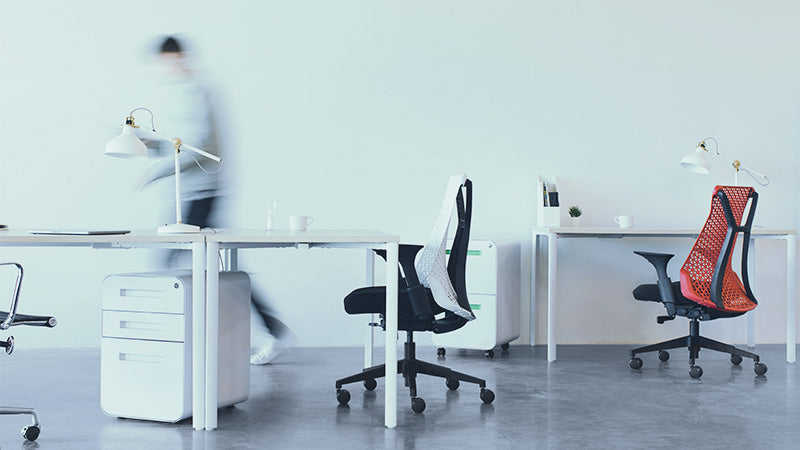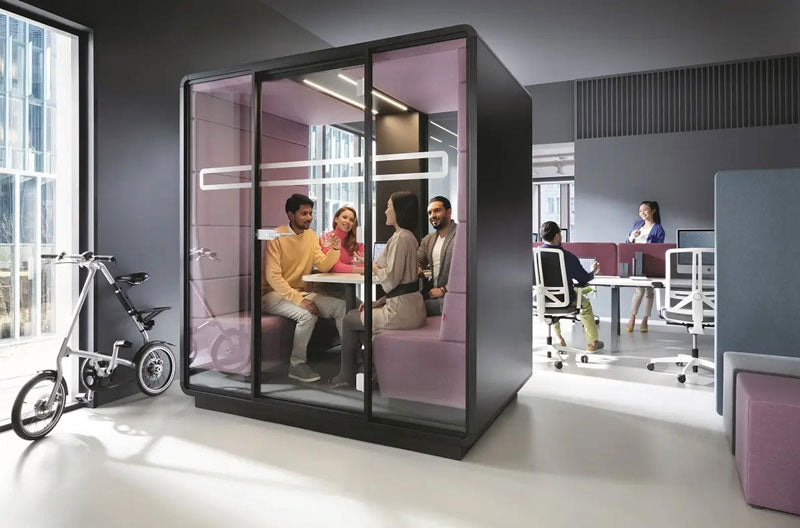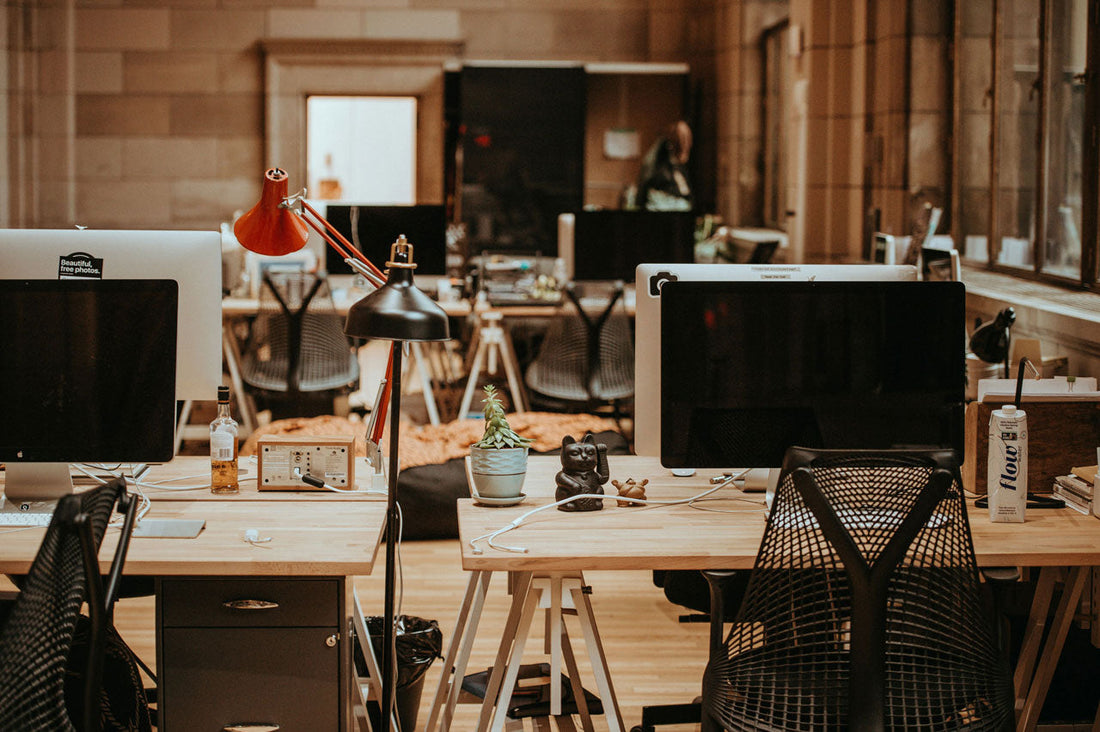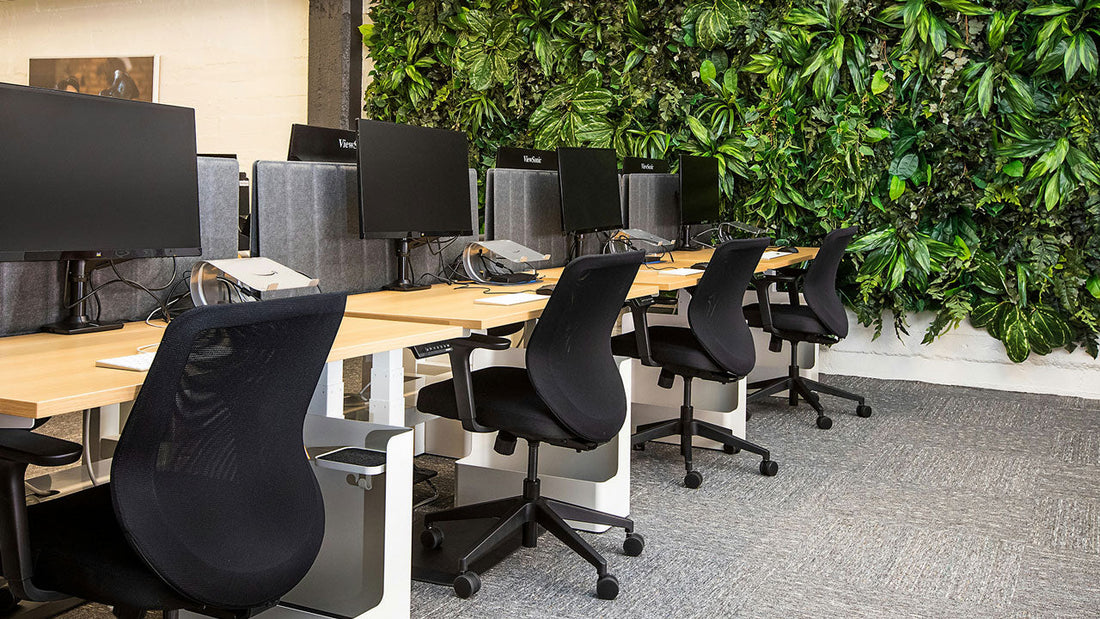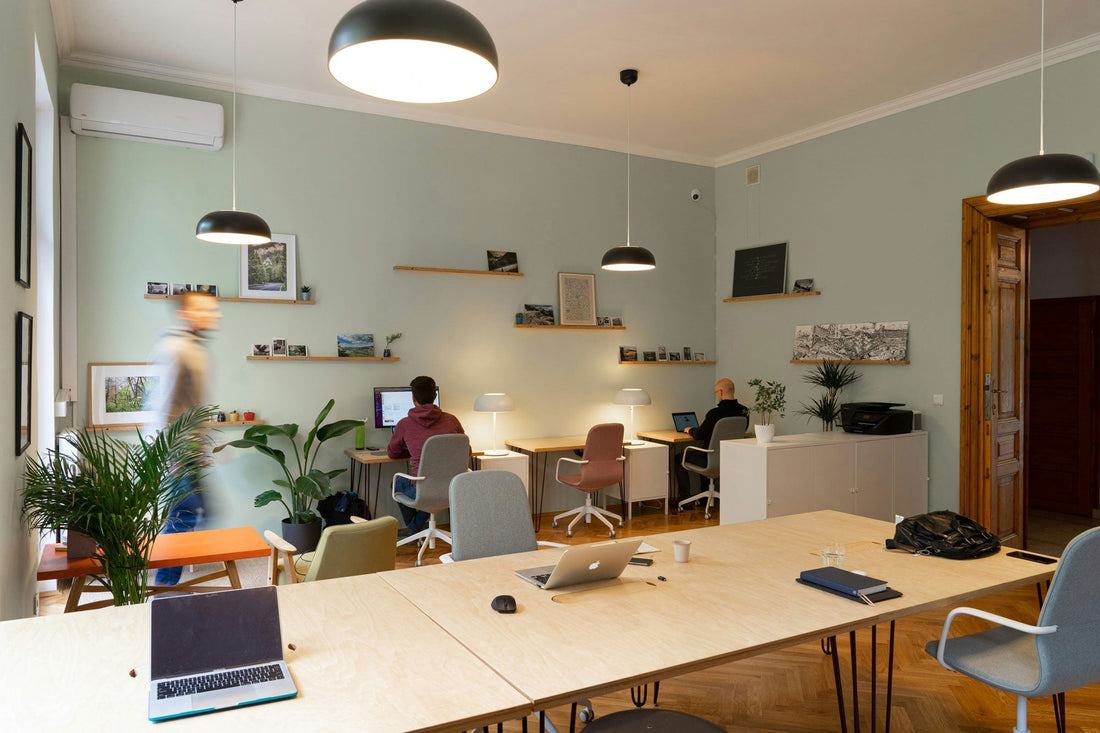Blog
Unlock your Office Potential
As the hybrid work model becomes the new norm, optimising your office layout is crucial for fostering collaboration and productivity. By asking the right questions and reassessing your space, you can tailor your office environment to suit the needs of your workforce. This article idenitifies the considerations when looking to reduce your overall footprint and operational costs.
Learn moreOffice Acoustics for Noise Reduction
While office space evolves for a mobile workforce’s changing needs and companies continue to embrace open-plan office design, recognising the requirement for office acoustics is becoming increasingly critical. The need for ease of communication, privacy and freedom from annoyance determine the acoustic requirements for an office. In particular, they lead to the control of the background noise. Open plan office acousticsFor facilities managers, understanding the basic structure of open office acoustics and understanding the way the physical elements of the office environment impact sound transmission is an important step in implementing good acoustics and mitigating noise pollution. The ceiling, the walls, the floor and the sound masking system all contribute to the acoustic quality of a room. “The problem with these [open plan] kind of working environments is particularly critical right now, as more and more employees work in open-plan offices and at workstations that are on average about 20% smaller than they were ten years or so ago.” (workinmind.org) Background NoiseTechnology has changed the office environment when it comes to workplace noise. We no longer need to suffer the choruses of mechanical typewriters, listen to the drill of dial-up modem or the deaf beeps on a busy fax machine. But the beeps, alarms and pings of mobile phones and email notifications and the human afflictions of coughing, sniffing and sneezing continue to plague us. Not to mention, the chatter, whether at the water cooler, around the kettle or across desks, people still talk a lot. A study by Udemy supports this with 80 %of respondents claiming chatty coworkers are the biggest distraction, while office noise was cited by 70 %of them. Udemy. Often, people only start thinking about acoustics once they experience an actual problem in the office—excessive background noise, too many distractions or lack of privacy. Therefore, acoustic solutions should be part of the design process of a space from the very beginning, requiring close collaboration across all teams involved to achieve the best result, from a design as well as acoustic perspective. By reducing distracting sound elements, a number of benefits can be observed in the office: 48% increase in employee focus 51% drop in employee distraction 10% fewer errors made 27% reduction in stress level How to Reduce Office Noise: Budget-Friendly Solutions Add PlantsDid you know that indoor plants absorb sound, too? Landscapers and interior designers use plants to curb noise in homes and businesses all the time.The best plants to use for sound management include ferns, fiddle-leaf figs, and palms. Our living green walls are a great way to enhance a building’s visuals, improve air quality as well as employee alertness and energy levels. Buy Sound Absorption Tiles or PanelsYou can buy panels, usually made from mineral wool and/or foam, to help soundproof your spaces. These can easily affix to walls or stand independently. Apply sound absorption panels to loud spaces to hold noise in, and to quiet spaces to keep noise at bay. Panels come in all sizes and a few shapes so that you can buy smaller tiles or pads for meeting rooms and larger options for your most open spaces. Below is an installation done at Ariki Creative with white and custom printed panels. Silence Clouds are a good retrofit solution for noisy and reverberant spaces such as cafes,boardrooms and offices. With their high NRC, they are a very effective panel and reduce reverberation times as well as preventing parallel echo. Add Noise to Control NoiseSometimes the best recourse is to push back. Adding ambient noise like binaural beats, nature recordings, coffee shop ambience, or very light jazz can drown out busy office sounds in favour of smooth, unifying noise throughout the space. This may still distract some employees and it may be best to talk to your team and profile what kind of atmosphere each of them prefers to work in and why. Consider Movable Pods or Booths for Sound-Proofing to Create Quiet Zones You may not be able to add or remove walls, but you might be able to redistribute what’s already there into a better acoustic flow.Like the movable walls, you can purchase entire pods or booths that act as moving offices. Some of these pods are no larger than a phone booth and they function that way — providing a silent refuge for private calls. Other pods imitate much larger conference rooms and can fit more people to serve the same purpose. You might use pods to keep loud noises in the pod or provide a quiet space to escape the noise going on everywhere else. Add Movable WallsIn lieu of installing brand new walls in your “open” office space, add movable walls. These wall panels, often come on wheels or sliding discs that allow them to be moved easily by someone of average strength. These work to enclose spaces temporarily, separate teams, and generally provide more structure for the sound and movement in your space. BackdropTM is an acoustic screen family which reduces distraction from noise and decreases visual interruption.Use Backdrop to create private zones for focus work in an open-plan office or as a divider to form spaces where groups can collaboratewithout disturbing others. If you’re looking to make intermediate or long-term changes in your office to facilitate better acoustics, give us a call. We can help you planing out furniture, install baffles and sound absorption panels, and even reshape your existing space into something more acoustically inclined. Works Cited “BuzziSpace.” Buzzi.space, BuzziSpace, 2021, www.buzzi.space/noise-reduction/finding-a-solution-for-acoustic-problems-in-your-office. Accessed 7 May 2021.“Eden Blog | 12 Ways to Reduce Noise & Improve Acoustics in Your Office.” Edenworkplace.com, 2021, www.edenworkplace.com/blog/reduce-noise-in-your-office. Accessed 7 May 2021.Sullivan, Suzanne. “Office Acoustics for Noise Reduction – Trevor Blake.” Trevorblake.co.uk, 25 Mar. 2021, www.trevorblake.co.uk/insight/articles/2020/01/office-acoustics-for-noise-reduction/. Accessed 7 May 2021.Sykes, David M., PhD., 2004, “Productivity: How Acoustics Affect Workers’ Performance in Open Areas”
Learn moreThe Importance of Acoustics in Open Offices
Open spaces are noisy. Between 25 and 30% of employees are displeased with the acoustics in their workplace. Human speech is the biggest source of noise and distraction in the office. However, the acoustics of an open-office also plays a vital role.
Learn moreGen-Z Workers may be getting lonely working from home, here are some ideas to help.
Loneliness leads to isolation, which then leads to burnout and disengagement on the job. Feeling isolated at work can be the difference between loving your job and dreading the thought of Monday morning.
Learn moreCo-Working is Changing
The Panel welcomed Liz Elam from GCUC, Steve King from Emergent Research, and James Rankin and John Williams from Instant Offices.
Learn morePractical Benefits of Leasing Office Furniture
The concept of leasing is trending as the leasing companies are also allowing businesses to buy the furniture, they have been leasing. This could also be a way to try before you buy. You can rent the furniture for a minimum time span, and then buy the same if you find it works well within your organisation.
Learn moreWeWork Software the New "Google for Spaces"?
We work has made a surprising move in February by buying Euclid a service that tracks smartphones in retail spaces. This comes after purchasing Teem’,a Salt Lake City based office management startup pushing to also become a software-as-a-service provider.
Learn moreThe Future and Evolution of Co-working
We are lead to believe that coworking is an open plan, airy space, working with other people. But then there are the major coworking operators such as WeWork and Christies which are basically serviced offices.
Learn moreSmart Office Interiors vs Sustainability
More desk-bound work and converging technology are playing a big part in modern, sedentary lifestyles. To counteract this, it is important that office design takes human factors and ergonomics into consideration. Research from the Furniture Industry Research Association suggests that only 1% of the UK currently have sit-stand desks in comparison 90% of Scandinavian office workers.
Learn more




